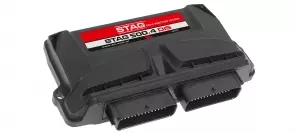- Main page
- Search
- Up to date
- Products
- Technology
- Vehicles
- Video
- Conversion Payback Simulator
Port Injection - Conversion Payback Simulator
Direct Injection - Conversion Payback Simulator
Diesel - Newsletter
Toyota FJ Cruiser LPG by STAG - gas in the mud
- Home page
- Up to date
- Reportages, interviews, road tests
- Road tests
- Toyota FJ Cruiser LPG by STAG - gas in the mud
« Powrót
 loading results...
loading results...Being a petrolhead can take different forms, with customising, engine tweaks, fancy paint schemes or rebuilding your ride from the ground up being just a few examples. Some manage to find compromise between motoring and contact with nature. They call it offroading and they use some extraordinary gear for that. But everything comes at a price...
Most cars used for off-the-beaten-track fun are diesels. Why? Because oil burners are commonly considered cheapest for the job. They are generally estimated to consume 11-15 litres of fuel per 100 km, while petrol powered equivalents, typically sporting large capacity 6- and 8-pots for appropriate torque supply, would only suffice with 20-25 l/100 km. Conversion to autogas could be the solution – it cuts the fuel bill considerably and makes the running costs comparable to those of a diesel with the added value of power well in excess of 200 PS instead of 110-130 PS you normally get from an oil-sipper. And so we arrive at the car we're about to present to you – a serious offroader with a petrol-engine given the LPG treatment, converted and used by AC, an autogas system manufacturer from Białystok, Poland.
Do przeczytania pozostało: 66% tekstu
Wybrane treści na gazeo.pl, tak jak ten artykuł, są dostępne dla zarejestrowanych Czytelników, którzy wykupili dostęp.
Gazeo.pl to sprawdzone informacje, porady, testy, relacje z targów i bogate kompendium wiedzy o LPG.
Planujesz montaż instalacji LPG? Poznaj dokładnie producentów, najnowsze rozwiązania techniczne i dostępne na rynku instalacje. Zobacz co warto zamontować.
Masz instalację? Lubisz wiedzieć? Bądź na bieżąco z nowościami, przepisami i poradami.
Gazeo.pl - konkretnie o autogazie!

You may also find these interesting:
 loading results...
loading results...






